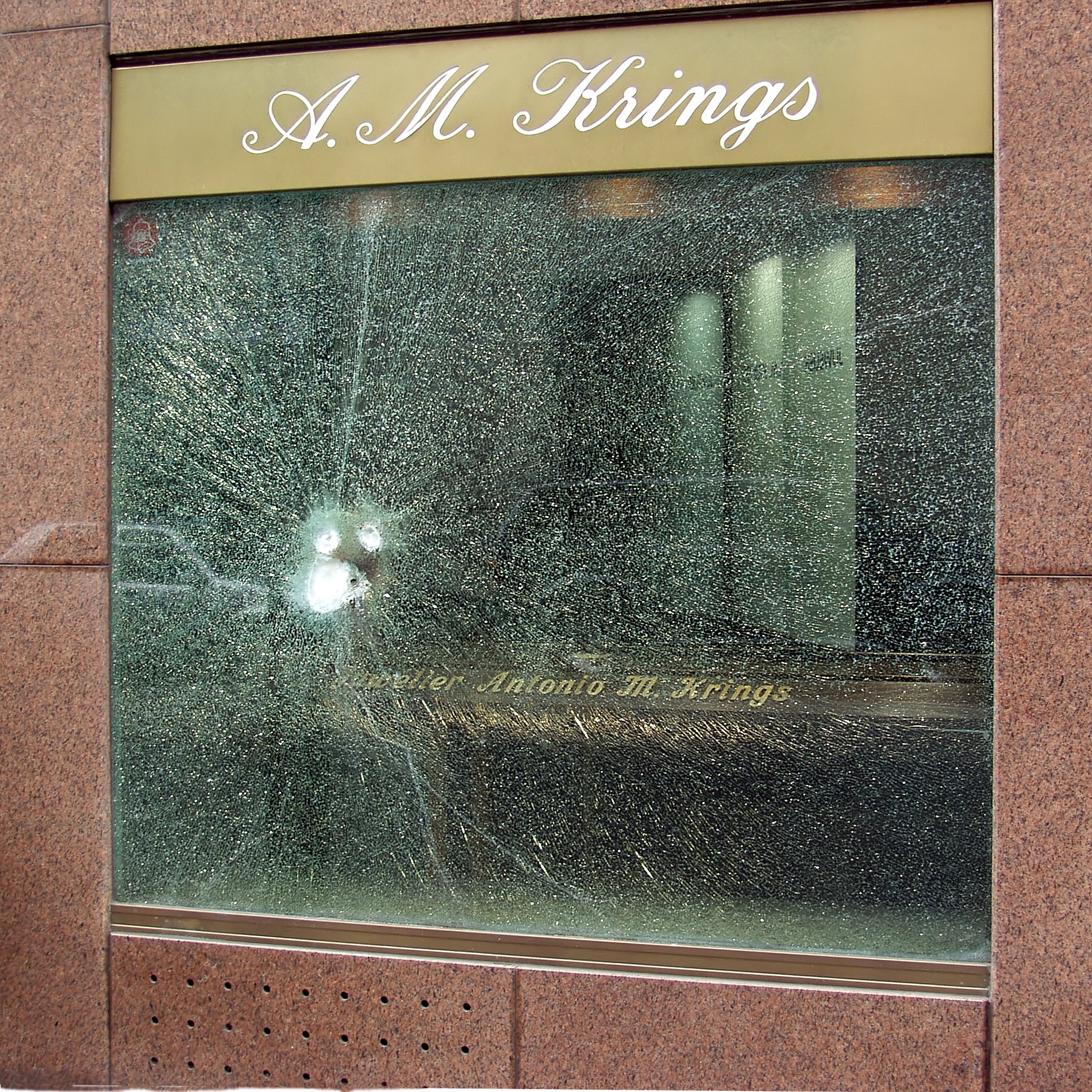Measure type: Target hardening
Target hardening is the measure of strengthening the security by increasing the required effort to commit crimes to or at an object.
Contents
Description
Target hardening involves all measures that make committing a crime more difficult and reducing the opportunities for criminals to achieve their goal. Dependent on the type of crime the realisation of this measure can take quite different forms, ranging from teaching self-defence to possible victims of assault to bomb-proofing buildings against terrorists. In general the aim of target hardening is not to make objects completely resistant to attack, but to increase the risk of an attack (by for example increasing the time it takes to overcome the measures) to a level where the risk outweighs the gain of the crime as perceived by the offender.
Examples
Examples of target hardening can be categorised by the type of attack they oppose:
Against forced entry
- Toughened glass (acrylic, polycarbon, etc.)
- Latticework or screens to cover windows
- Deadbolt and vertical-bolt locks
- Metal door/window shutters
- Door anchor hinges with non-removable pins
- Tamper-proof screws in fittings
- Bollards and indirect routes against ramming
- Vertical metal or small-mesh (unclimbable) fencing
- Steeply angled roofs with parapets and ridges
Against destruction
- Concrete or steel picnic tables, benches, bleachers
- Trash receptacles bolted to concrete bases
- Hardened rubber or plastic swing seats
- Fire-retardant paint
- High-impact plastic or steel fixtures
- Rough-play-tolerant adventure playgrounds
- Slash-proof and steel-framed transit vehicle seats
- Graffiti repellent spray on graffiti prone objects
- Tamper-proof sign hardware and fasteners
Against bombs
- Stand-off zones where no unauthorized access is possible
- Increasing bomb resistance for vulnerable (parts of) objects
- Locating vulnerable structures behind other, bomb-resistant or sacrificial structures
Against toxins and air-borne agents
- Detectors
- Closable air vents
- Unreachable air intakes
- Alternative air intakes
- Emergency forced air circulation
Against violence
- Advise, education or training of potential victims
- Separating traffic flows of for instance pedestrians and motor cycles to prevent snatch theft
Against all of the above
- Early warning (alarms, emergency button) of action force or action force present
- Quick response of action force
Essential conditions
<Approach object from point of view of perpetrator and think what makes his life hard>
Requirements to the urban environment
<Lots of measures have big impact on 'habitants' of object -> close tuning with habitants>
Effectiveness
Economic effectiveness
Target hardening lowers the costs of security threats, but also requires time and money by private agents, companies/developers and the public authorities, exacting economic costs. Together the benefits and costs are referred to as economic impact of security measures. The costs of surveillance measures contain the relatively straightforward direct expenditures on capital equipment and operational costs (both temporary and permanent), and in addition generate various types of secondary effects. Whether the costs are making sense from an economic point of view, depends on many factors, and can be answered by two distinct sets of questions:
- Are the envisioned target hardening measures cost effective from a socio-economic point of view, or are there better alternatives?
- Which specific agents (individuals, companies, sectors, authorities) are affected by the target hardening measures, and to which extend? How do the envisioned measures adjust the behaviour of these agents, and of course the behaviour of criminals/terrorists?
Economic tools can help the decision makers to answer these questions and to prevent wasteful expenditures on security (of course in collaboration with insights from criminology, sociology, etc.). A good example of efficient target hardening is sustainable design since it combines energy efficiency with security. In contrast, target hardening measures like big concrete walls or window bars in retail areas are classical examples of measures that do not create a welcome environment, creating indirect economic effects as a result of a reduction of the perceived security and quality of the environment.
Side effects
< decreases feeling of security of habitants>
Footnotes and references


